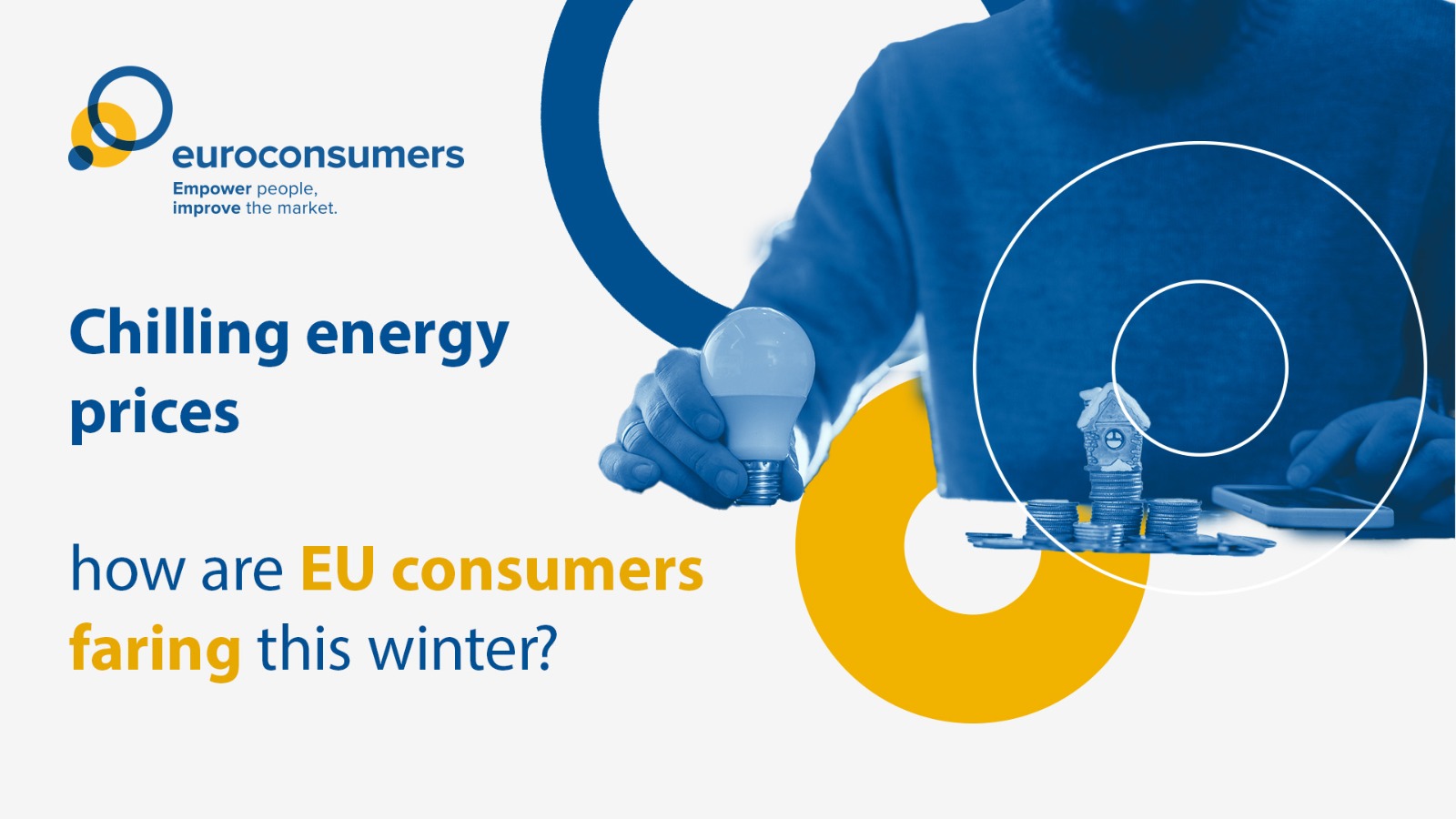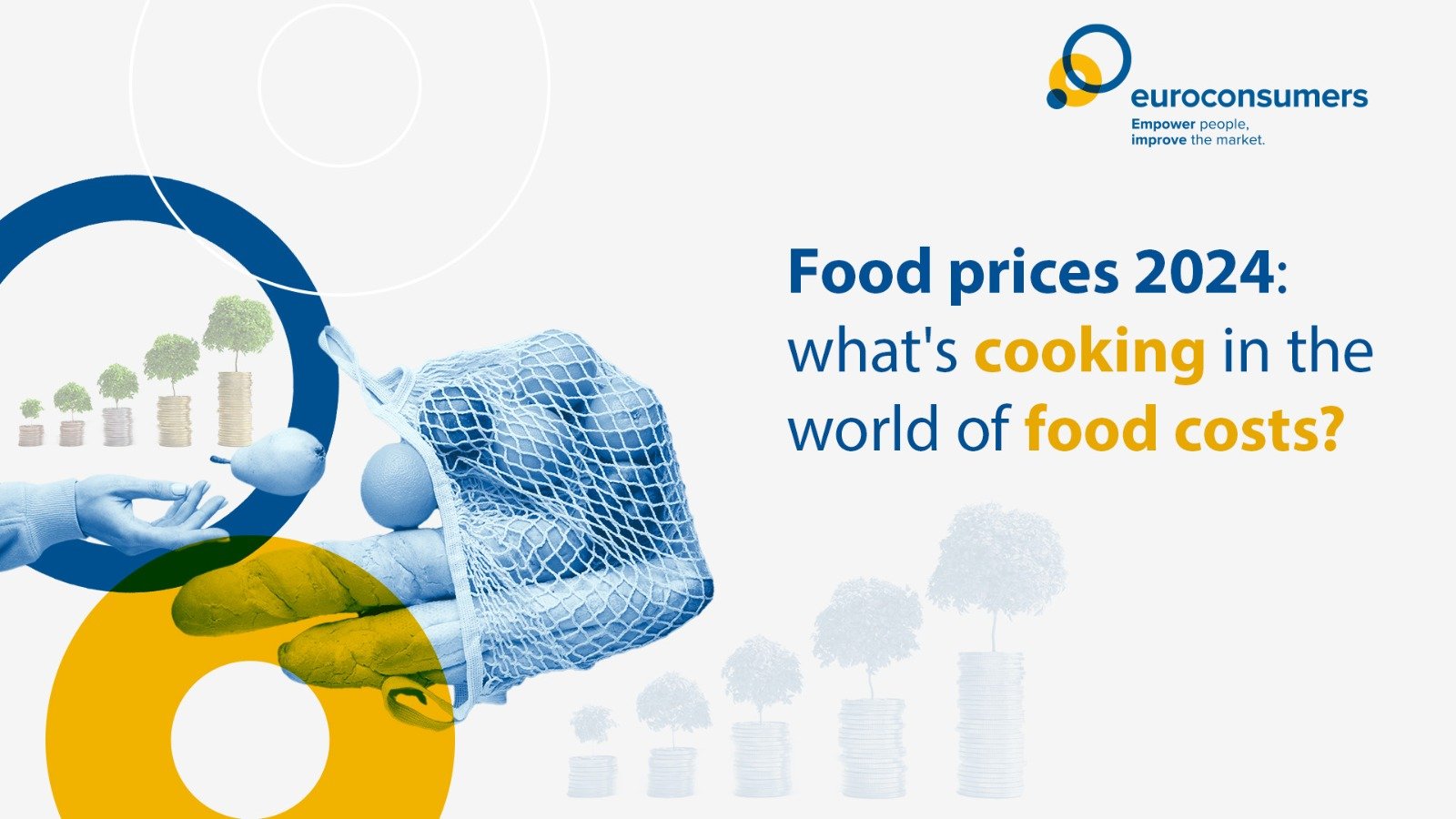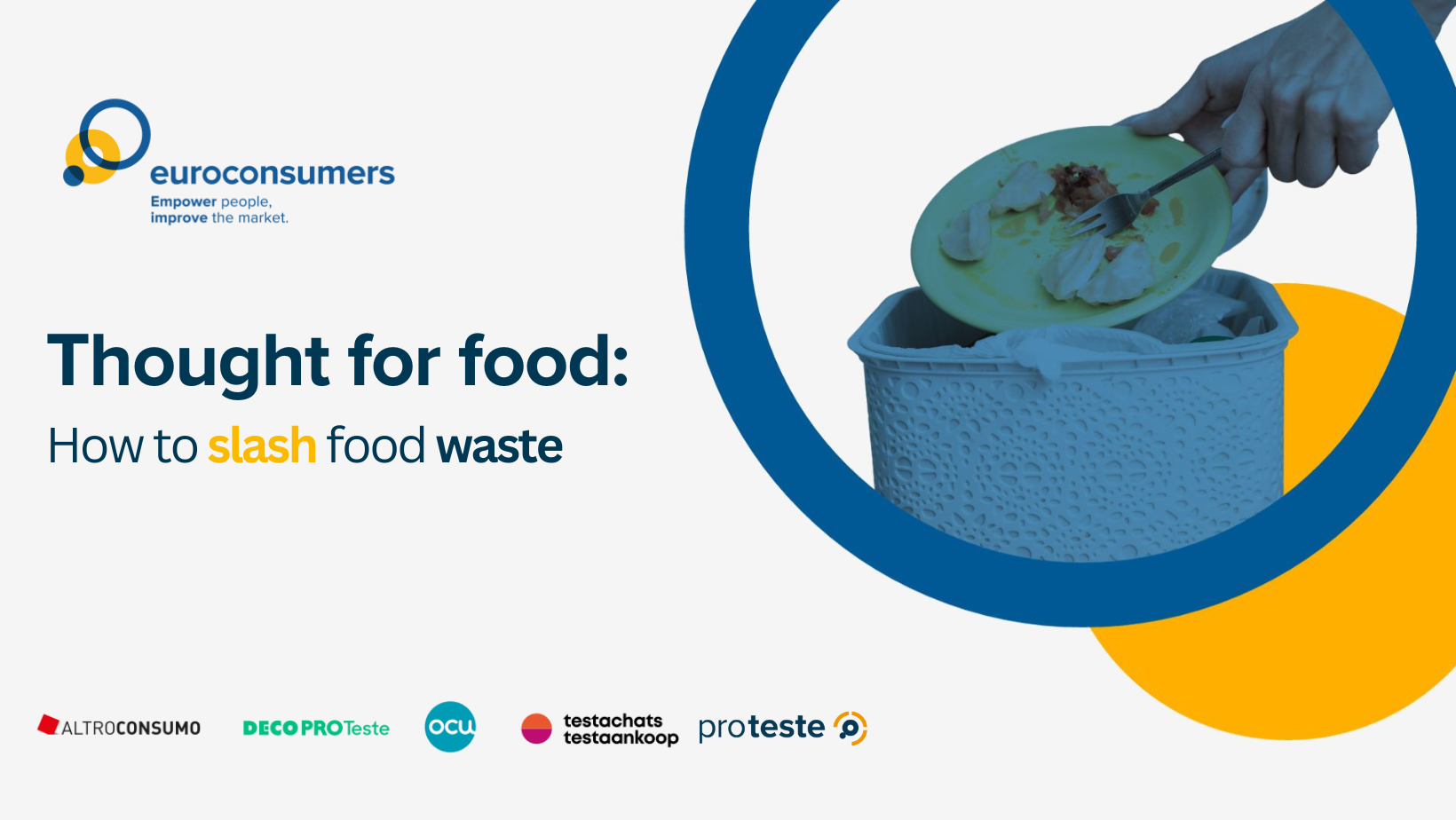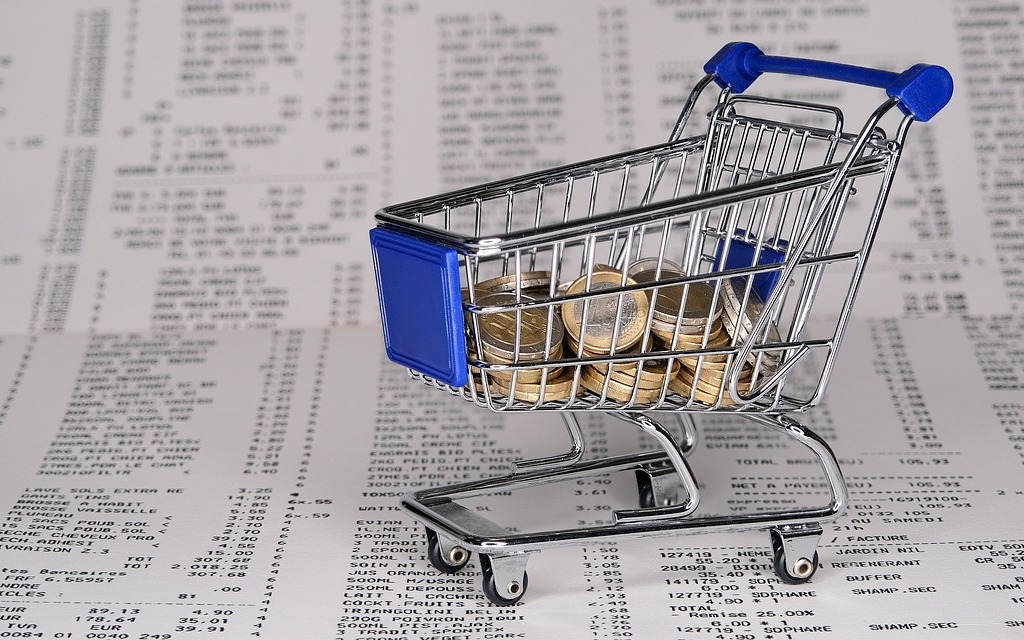Food inflation may be declining but the rate hides a story of high supermarket bills, opaque pricing and shrinking products. In this article, Euroconsumers looks at a range of trends and tactics uncovered by their members that might be embedding high prices and low value for money in the aisles of our supermarkets.
How inflation figures are calculated
To start off, let’s consider how inflation rates are calculated. Monthly figures are released which compare the price a consumer pays for an ‘average’ range of goods against the prices they paid in the same month of the previous year. The difference between them is the rate of inflation.
This is a helpful indicator of developments, but it doesn’t reveal the full consumer experience over a longer term. It is possible to have declining inflation and prices that are still well above where they were two years ago.
The ‘good news’ on food inflation… at first glance
With that in mind, let’s turn to recent monthly announcements of food inflation figures. Euroconsumers member Testachats/Testaaankoop has been monitoring prices of over 3,000 grocery and household products across seven national supermarket chains since 2021. The 2023 tracking figures certainly show a decline in the rate of inflation to 8.1% in December 2023, which is good news.
And there’s better news on the horizon in the case of Belgium at least. There, shoppers can expect food inflation to reach zero by Spring (barring major climate or geopolitical shocks) which would mean prices compared to a couple of years ago would be high, but stable.
The ‘bad news’ on food inflation: the bigger picture
As explained above, while food inflation may be slowly declining there’s more going on than the monthly figure shows. First of all, different items on the shopping list have their own inflation rate. Basic essentials like vegetables are averaging a 20% rise, frozen products 10%, fish 7% and bread 5%.
Then, standing back from the monthly figures to take a longer view brings a different perspective of what households are dealing with. In December 2022, inflation was 19.7%, meaning that food inflation has actually risen almost 29% in just two years.
What’s behind the averages?
These averages also hide the price rises of particular foodstuffs over the previous two years – vegetables for example have risen in price by a whopping 40% in two years. And bread, which by Christmas 2023 had seen a rise of ‘only’ 5%, has in fact gone up 20% since 2021.
That’s a hard pill for any household to swallow, but particularly those that are less well-off and spend a larger proportion of their overall income on essential food.
More and more a large part of those on middle incomes are also being seriously affected by food and other types of inflation, finding themselves with less room to manoeuvre as budgets are squeezed.
Last year, a third of the 16,500 people surveyed in Euroconsumers’ affordability barometer said it had been much more difficult or impossible to afford monthly outgoings. They will get little comfort from lowering food inflation figures if the overall price remains unfairly high.
Short term national interventions to lower prices are now coming to an end which are piling pressure back on households. For example, Portugal had a temporary lifting of VAT on some food products. According to Euroconsumers’ member Deco Proteste, this started a trend of falling prices in an average ‘food basket’. With the end of the VAT holiday in January 2024, this trend has now reversed and prices now are the highest recorded since January 2022.
Are high food prices unfair prices?
During the peak of the grain and oil import crisis and rises in the cost of fertilisers that followed Russia’s invasion of Ukraine so soon after the supply chain shocks of covid-19, it was easier to understand why prices were high.
But as time goes on and supply chains and raw material costs recover, the reasons behind these stubbornly higher prices are hard to unpick. A new piece of academic research for example looks specifically at how conflict can lead to large firms taking advantage of crises to up prices.
Euroconsumers’ Start Talking webinar in May 2023 explored which parts of the food chain might be pushing up prices. Fingers have been pointed at hedge funds, suppliers, producers and retailers for the high prices found in the shops. Here’s some of the main charges laid against them:
- Greedflation This term applies to actors in the food chain who pass on the full or excessive cost increase of raw materials, production and labour to consumers to maintain or increase their profits. In other words, companies who take advantage of their customers for profit. This is made much easier in times of genuine inflation when consumers’ expectations become accustomed to higher prices. Consumer organizations like Testachats/Test Aankoop in Belgium and Which? in the UK have accused companies across the food system of ‘greedflation’.
However there is disagreement amongst central banks about whether the phenomenon is really happening. For example, the Bank of England conceded that aspects of greedflation were really occurring. In Belgium, the National Bank of Belgium said there was an ‘abscence of widespread greedflation’, citing that prices were also increasing in neighbouring countries. Of course, this is not a particularly solid argument against the existence of greedflation, it suggests instead that if there is greedflation, it is a cross-border, even global problem.
Testachats/Test Aankoop are still waiting on their request to the competition agency to investigate the potential causes of greedflation and which part or parts of the food supply chain is responsible.
Regardless of which type of company is to blame, it appears consumers have already made up their minds that it’s the supply side and not just general inflation that is to blame for stubbornly high food prices. A survey from December 2022 of people in all of Euroconsumers’ member countries of Spain, Italy, Belgium and Portugal found that four out of five consumers believe companies are taking advantage of the cost-of-living crisis for profit.
- Raw material savings not passed onto consumers: Testachats/Test Aankoop analysis showed that consumers are not benefiting from the fall in raw material prices that initially drove up food prices. For example, vegetable oils which were impacted by the war in Ukraine. The price on international markets has fallen 51% since March 2022, but the oils tracked in supermarkets remain 37% more expensive than in March 2022.
- Shrinkflation: Euroconsumers’ Spanish member OCU and Portuguese member DecoProteste have also been tracking the related phenomena of ‘shrinkflation’. This term describes the way brands quietly reduce the size of their products while keeping the price the same. Everything from yogurts to coffee or chocolate bars and sliced meat have been subjected to a slimmer new design – with the same price. Brands do this as they know consumers notice a price hike less than they would notice a reduced weight or size in small print on a package. For consumers, it is hard to spot and even harder to compare how prices are changing month on month. It reduces the ability of consumers to be able to compare and switch, which in turn removes a competitive pressure on suppliers and supermarkets to drop prices.
- Private labels could be letting down consumers: One rule of thumb most consumers use when budgets are stretched is to swap out branded goods for own-label supermarket products. These tend to be cheaper than brands, but amongst our members there have been some interesting results around the rate of price increases. Deco Proteste has found that in some supermarkets, own-brand or private-label goods have had a higher price increase than the branded counterparts. According to their price monitoring, 23 of the 30 own-brand products saw their prices increase more, in relative terms, than their manufacturer-branded counterparts.
- The potential savings that consumers could make by opting for distributor-branded products has fallen. Despite the discrepancy in increases, private label goods remain cheaper than the branded goods which is why they remain a popular option amongst shoppers.
Keeping food markets competitive and prices affordable
The large market share of supermarket chains within member states and the dominance of particular suppliers and distributors creates the conditions for these practices to flourish. The lack of alternatives for consumers means they have few options if they’re unhappy with their current choice.
For Euroconsumers it is essential consumers can benefit from a competitive food retail market where supermarkets and producers are incentivised to compete to deliver good quality, sustainable products at fair prices. This in turn relies on clarity of pricing and volume and a commitment to passing on inflationary reduction to customers.
The challenge for competition authorities is in understanding who and how particular parts of the supply chain are benefiting. The results of competition inquiries have been mixed so far – and last year the European Commission’s initial look at buying alliances that might be pushing out competitors was closed due to lack of evidence.
Expert on consumer rights and competition Agustin Reyna from BEUC thinks there’s scope to improve the enforcement mechanisms agencies have at their disposal:






